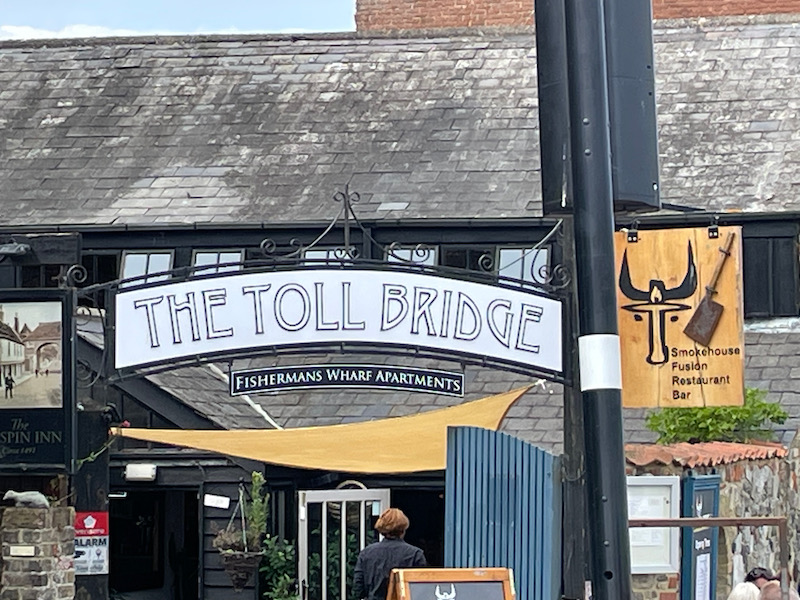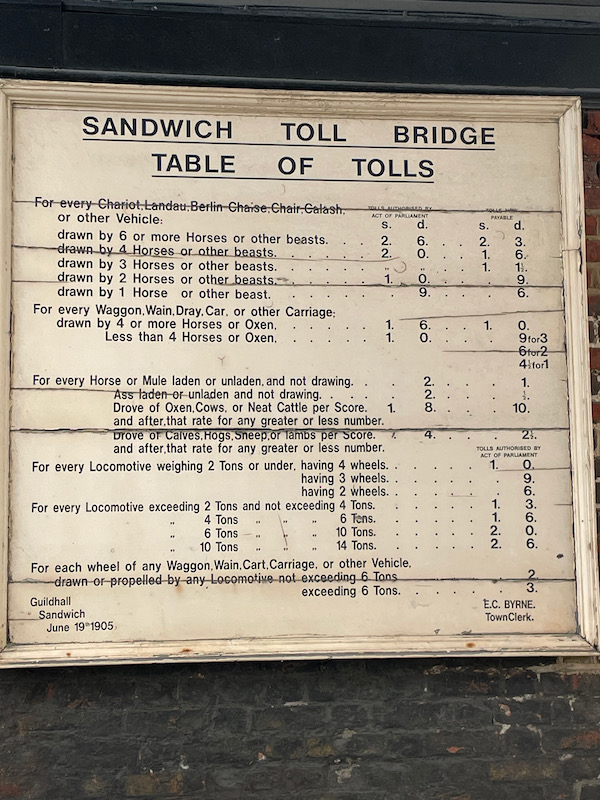Our Blog - Summer 2024 Trip - Sandwich, England
I think I have mentioned the "Cinque Ports" before, which was a group of 5 ports/harbors in Southeast England. Sandwich was one of the original five members, along with Hastings, New Romney, Hythe, and Dover. Once a major port, it is now 2 miles from the sea due to the silting up of the Wantsum Channel. The name of the town comes from "sand" plus "wich", which in old Anglo-Saxon means a place where trade takes place ... so a market town on sandy soil.
As you can guess, this is where the "sandwich" got its name, from John Montagu, 4th Earl of Sandwich. But a sandwich (stuff between bread) can be found long before the 4th Earl of Sandwich ... some say back to the 1st century BC. Montagu is an 18th century English aristocrat who liked to play card games at public gambling houses. He would have his valet bring him roast beef between 2 slices of toasted bread since it allowed him to continue gambling while eating, without the need for a fork, and without getting his cards greasy from eating with with his bare hands. And the "sandwich" was born.
This is the P22 gunboat that was used in the 2017 movie "Dunkirk". It was at the Royal Harbor in Ramsgate (which we saw earlier in the blog) but the mooring fees had risen and the owners decided to relocate the boat to the Quay here in Sandwich. The P22 was one of 17 high-speed patrol ships designed and paid for by the United States under the Marshall Plan to reopen and patrol the Rhine River at the end of World War II. Built in 1952 in Germany with German engines, they were among the first vessels to be built in Germany after the war. Each was manned by 6 US Navy personnel of the US Navy Rhine Patrol. They were eventually handed over to the West German Army in 1958 to continue to survey the river until it was sold in 1968 to private owners.
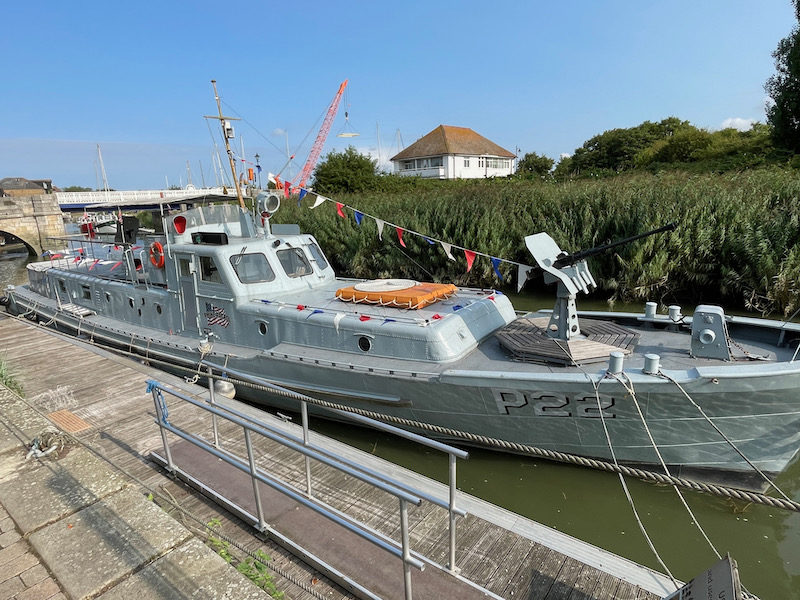
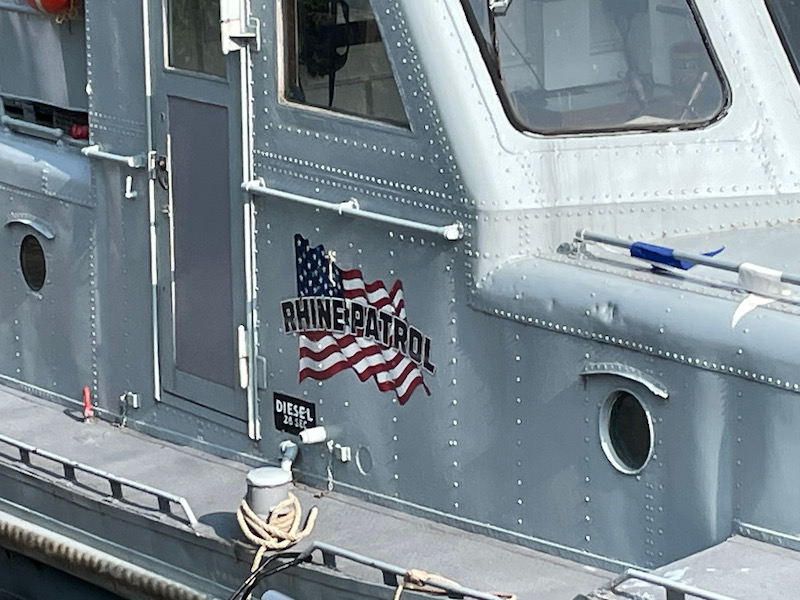
This is called the Millennium Beacon which was built to mark the Millennium. The red-and-blue shield emblem is the coat of arms of the town and also the emblem of the "Cinque Ports".
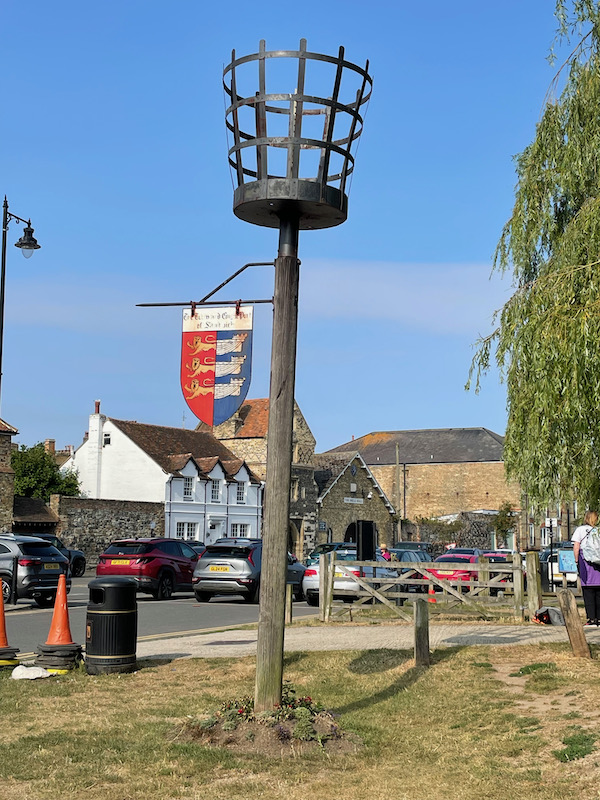
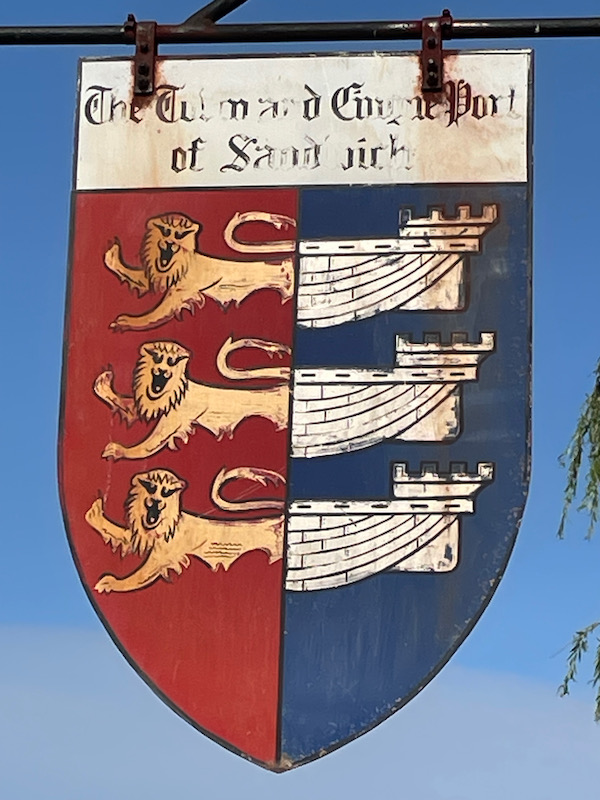
This 12th century church, St Clement's Church, was built using stone imported from Caen in France. The majority of the building is in a Saxon design but it also features an impressive Norman tower. This tower was a navigation landmark for ships and served as a lookout point in the town’s defenses. In 1170, Thomas Becket, the Archbishop of Canterbury, landed in Sandwich after meeting with King Henry II in France. He then journeyed to Canterbury Cathedral, where he was murdered (perhaps he should have stayed in Sandwich).
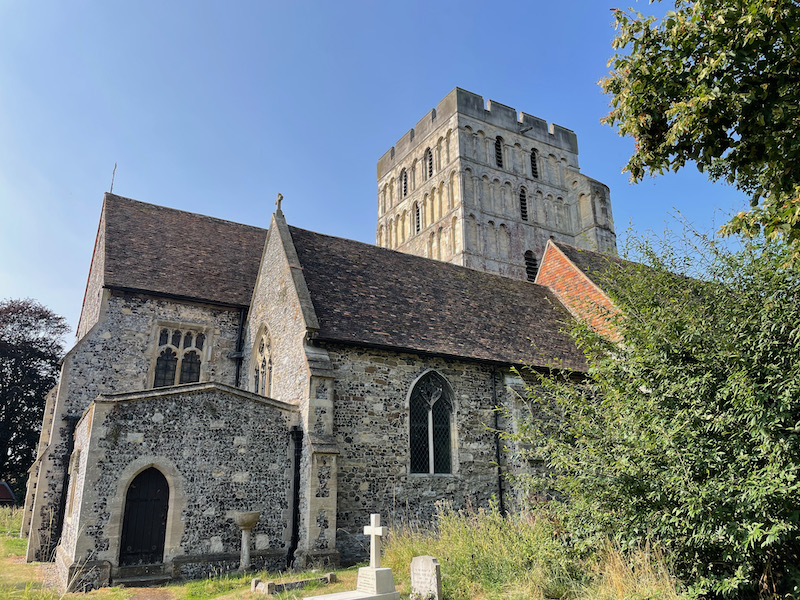
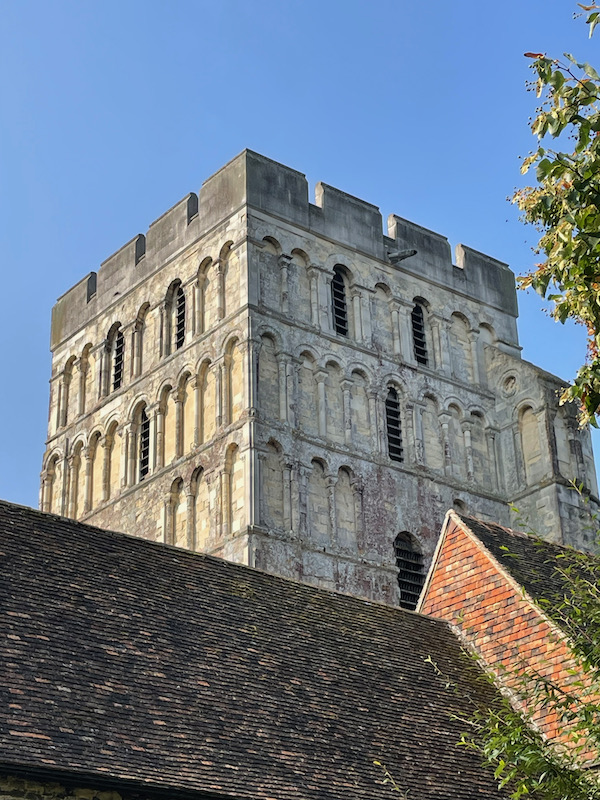
The interior is pretty simple, with the exception of the interesting dark-blue-wooden ceilings and the carved stone baptismal font. The ceiling of the main nave is fairly flat but the ones on the transepts have the boat-hull shape with a pretty impressive wooden framework.
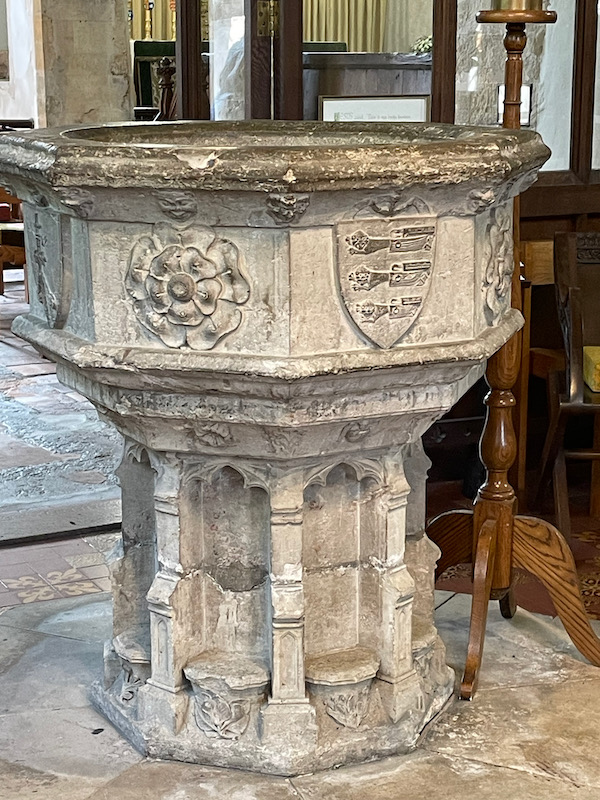
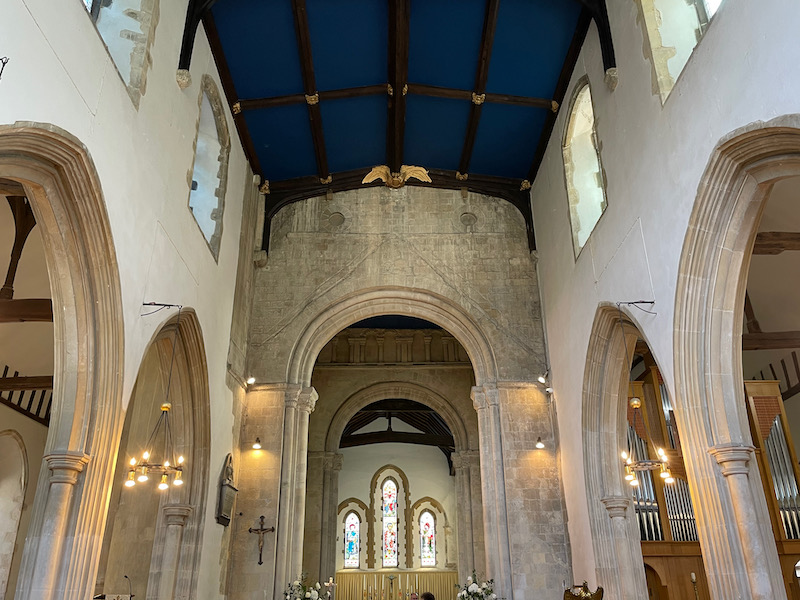
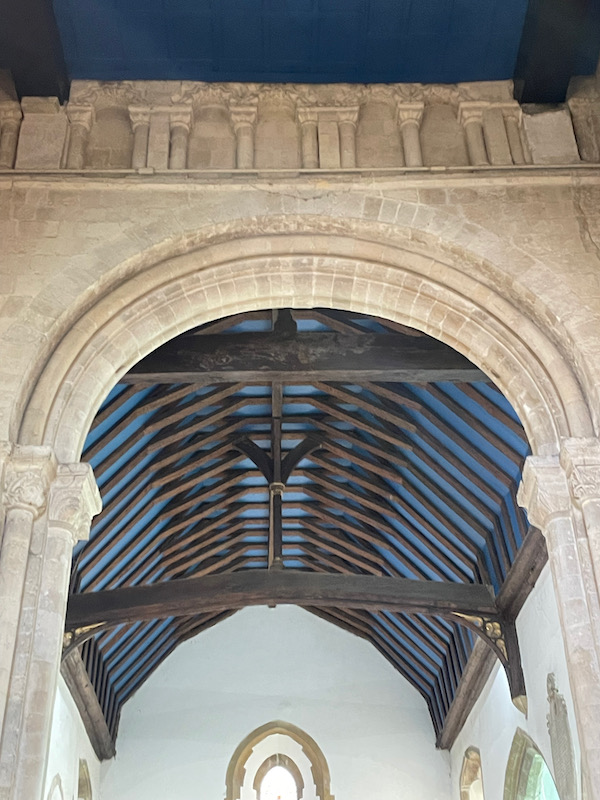
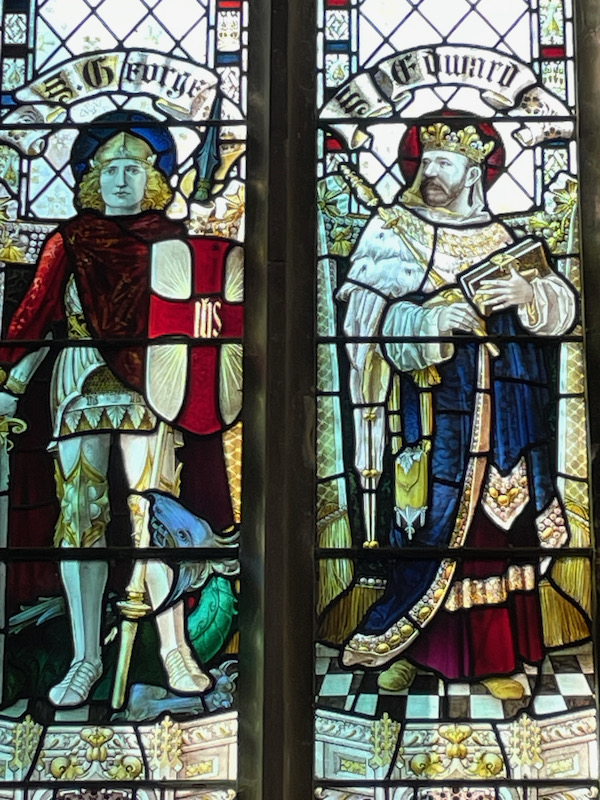
It is pretty impressive that they can list the Vicars of the parish back to 1316!
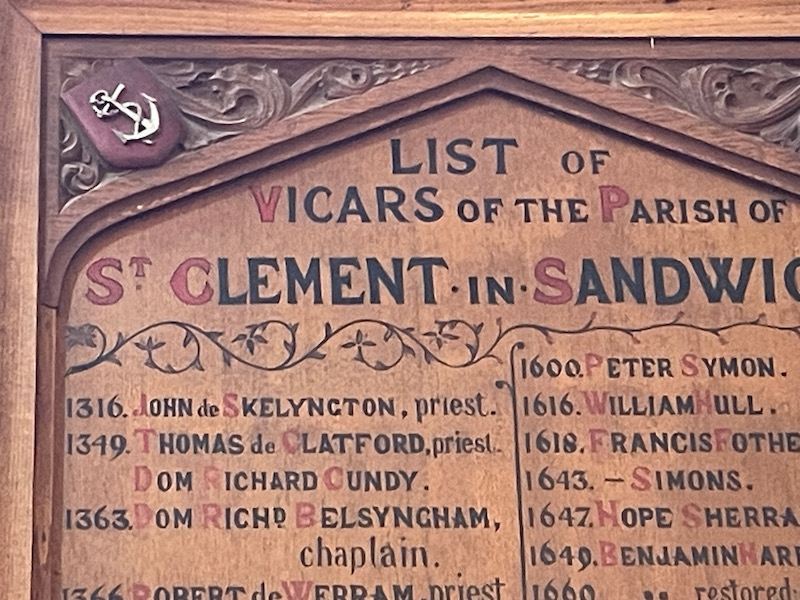
Sandwich was once a walled town with access through a series of gates like this stone archway known as the Fisher Gate. This is 1 of only 2 that have survived (you will see the 2nd at the end). The original gatehouse, from 1380, was enlarged to this structure in 1581.
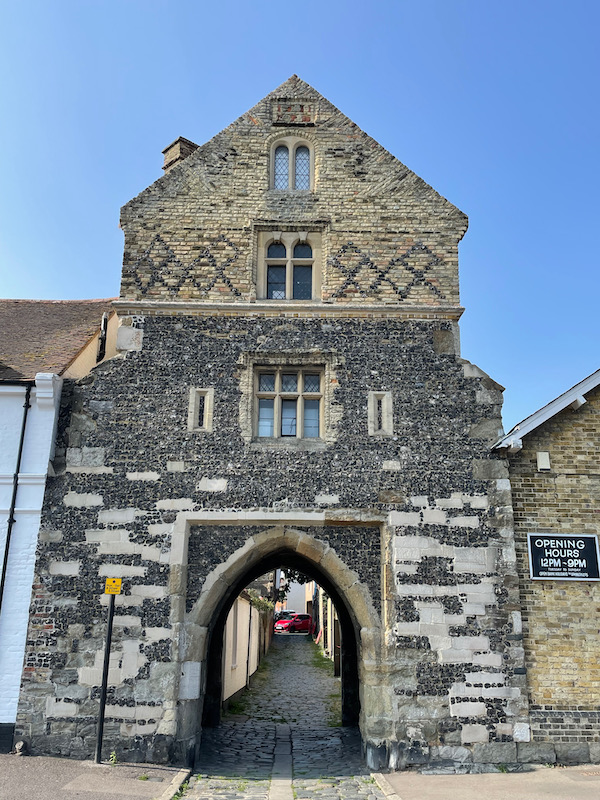
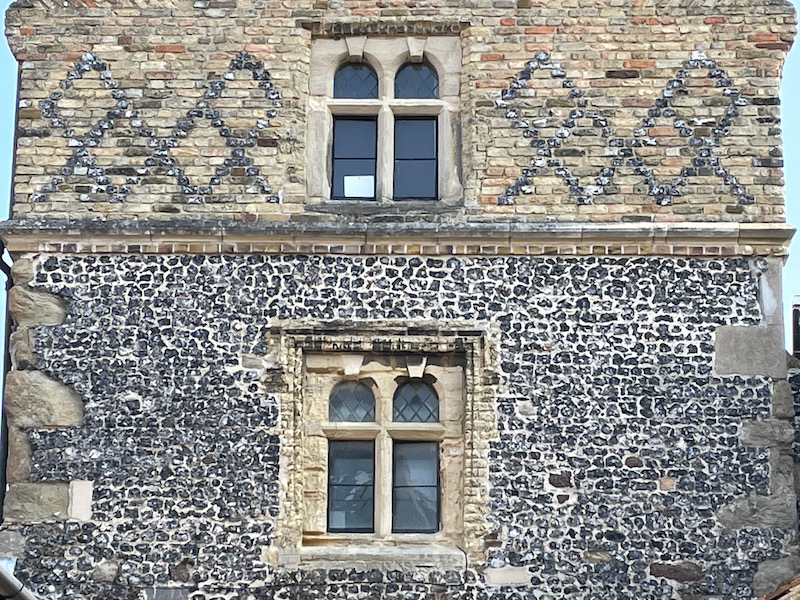
The Sandwich Weavers building is named after Dutch migrants who settled here in the 16th century, although the building dates to around the 13th century. In the 13th century, buildings on this side of the street would have been at the edge of the river (the clue is in the street name, "Strand", which is an Old English word for bank or shore). The buildings on the other side of the street are newer, having been built when the River Stour shrank and the land was redeveloped. You can see how on many of the older buildings, the upper stories jut out over the pavements. Sometimes, this was done to reduce the amount of taxes that had to be paid, which were normally calculated on the size of the ground floor. Here, they were limited on how deep the house could be to leave room for the sidewalk and road, but this allowed the owner to have more space in the living quarters upstairs.
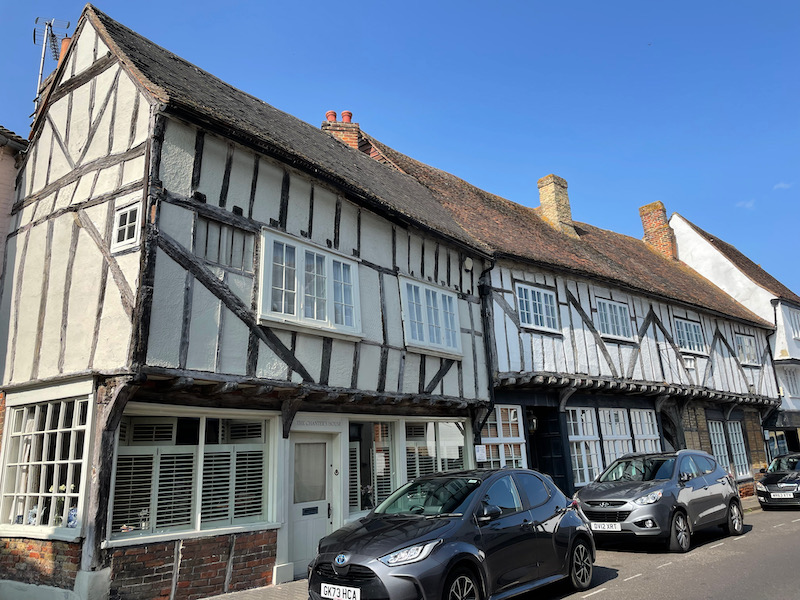
More timber-framed houses on Strand street, which actually contains the longest unbroken stretch of timber-framed buildings in England. This is actually 2 houses: Harfleet House and Dragon Hall, often known collectively as "The Pilgrims". A little bit of trivia ... the white parts between the wood beams on the external walls is normally just mud that is packed in and then painted after it dries. This made them susceptible to thieves who could force a way through the wall panels, and this is how the phrase "breaking and entering" came into being.
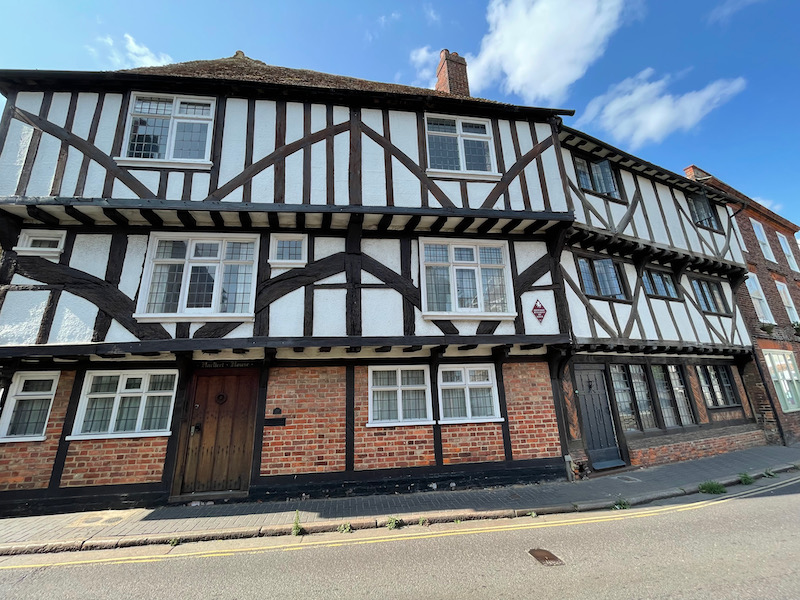
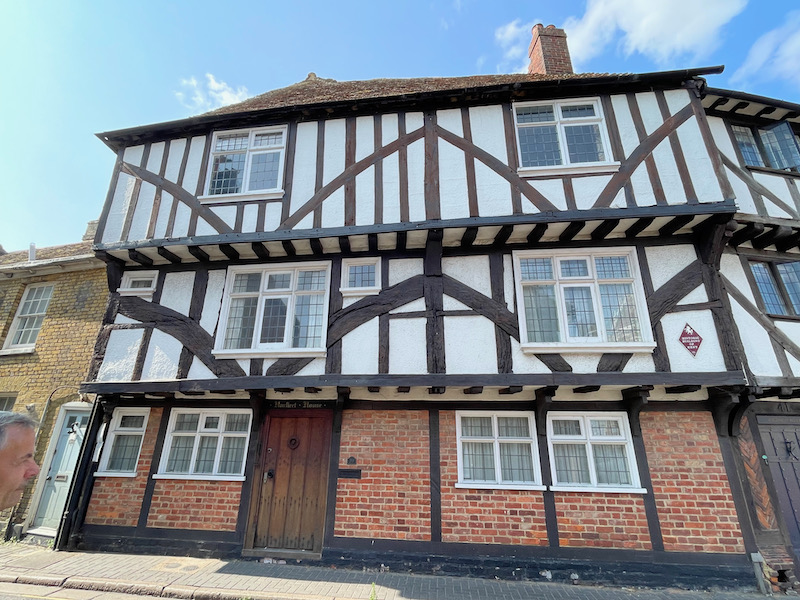
The water here in front of the house is called the Horse Pond Sluice, named after the small metal sliding gate (a "sluice") by the doorway of the house. Sluices were used to control the water level in streams and canals. The sluice here helps the flow of a waterway called the Delf (Old English for "ditch). This Delf is where water was diverted in the 12th century from the marshland outside the walls. It was intended to supply clean water but, despite strict laws, the results were mixed. Animals got into the water, as well as blacksmiths, butchers and tanners who used the Delf for their work. The stream was also used to dispose of all kinds of waste. As a result, waterborne diseases were a constant problem in Sandwich. Even so, the Delf was used for drinking water until the end of the 19th century.
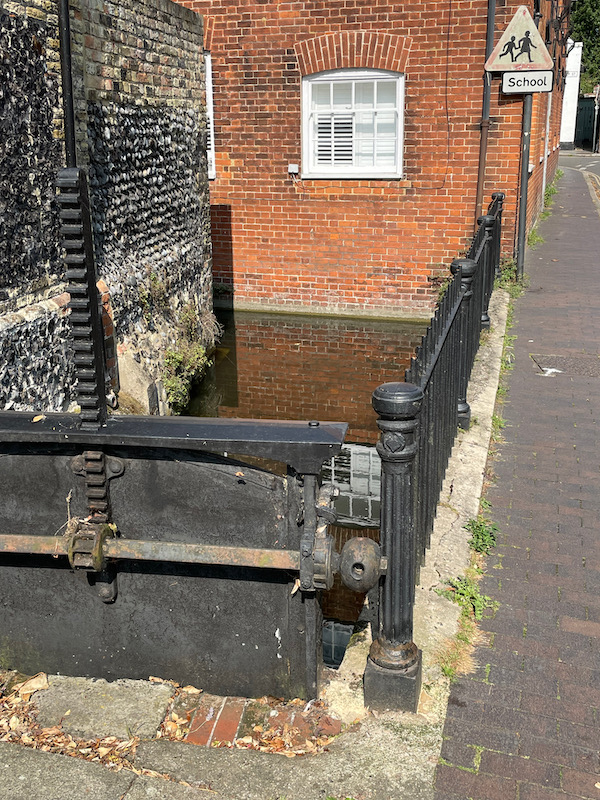
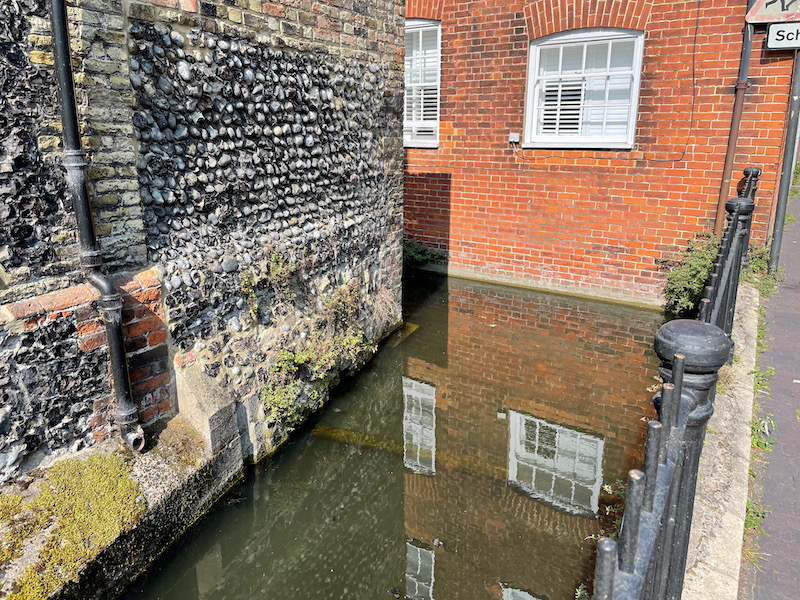
The Old Drum building, which was built around 1450, was originally a coaching house but is now a private house.
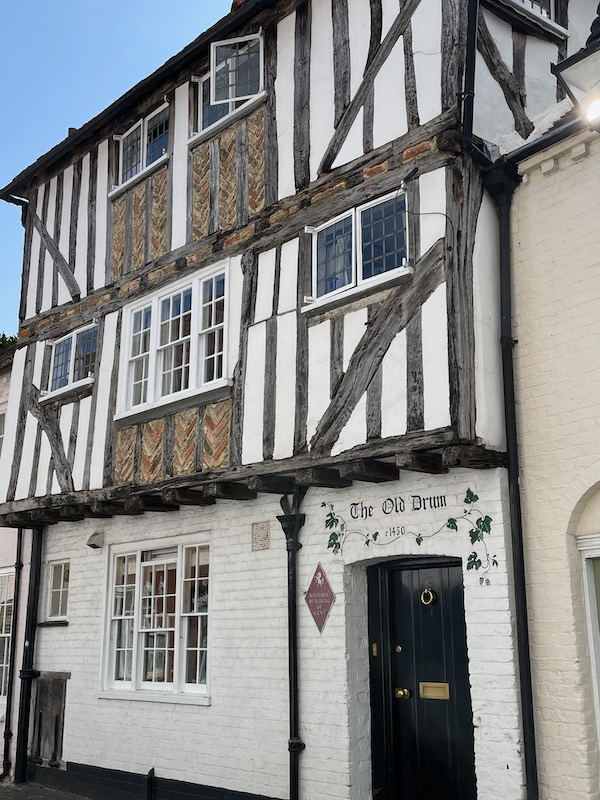
Sandwich’s oldest church, St Mary's Church, is thought to date from the 11th century but was rebuilt several times after damage by French raids. Notice that there is no tower. This is because in 1580, an earthquake struck the town, which weakened the structure and in 1667 the tower collapsed. It is no longer a church but they do still have the original baptismal font and a couple stained-glass windows. I'm not sure if the wooden-framework roof is original or replaced at some time when it was converted to a reception hall.
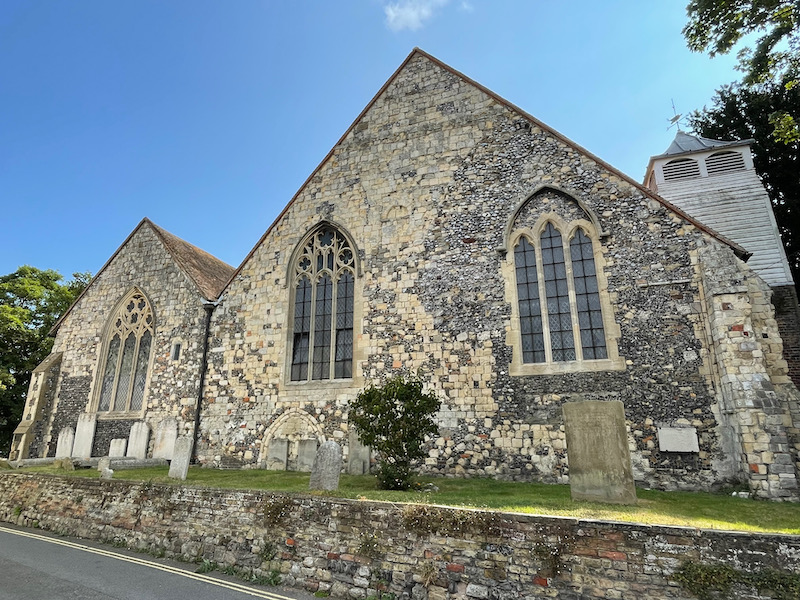
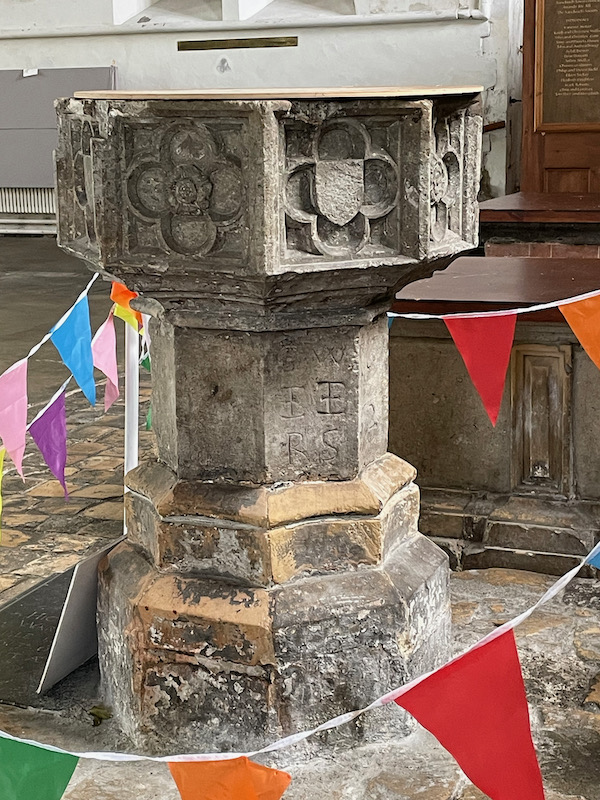

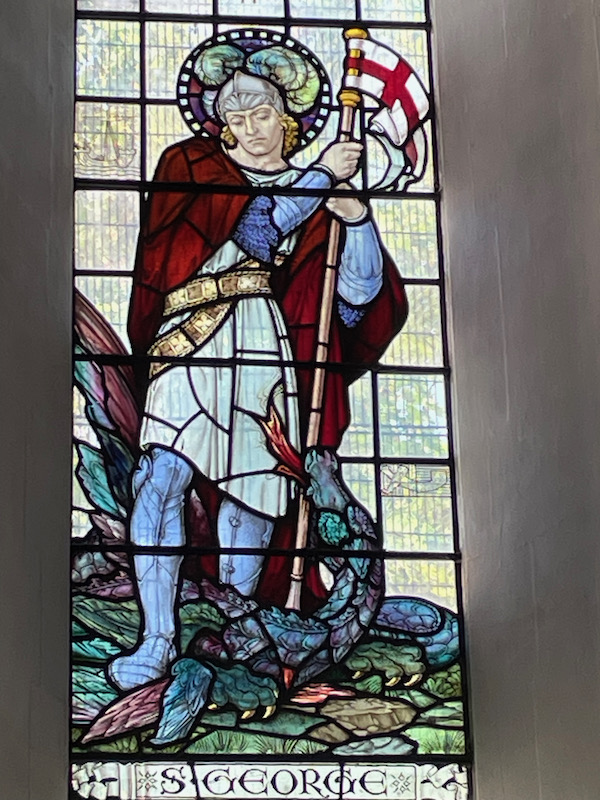
Even though it was called "St Thomas's Hospital", it is not a hospital in the medical sense. It was founded in the 14th century to accommodate medieval pilgrims traveling to Canterbury although this stone building dates from 1878. You can see again the coat-of-arms of the town/Cinque Ports.
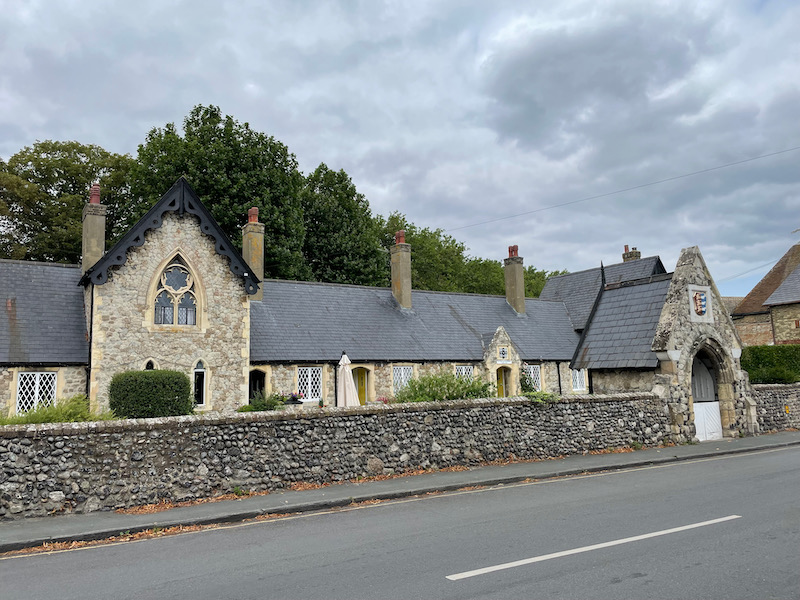
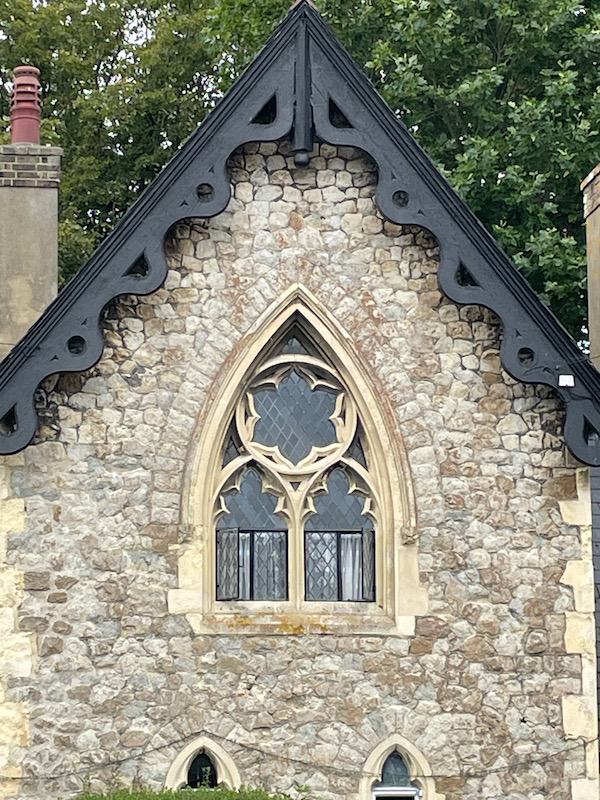
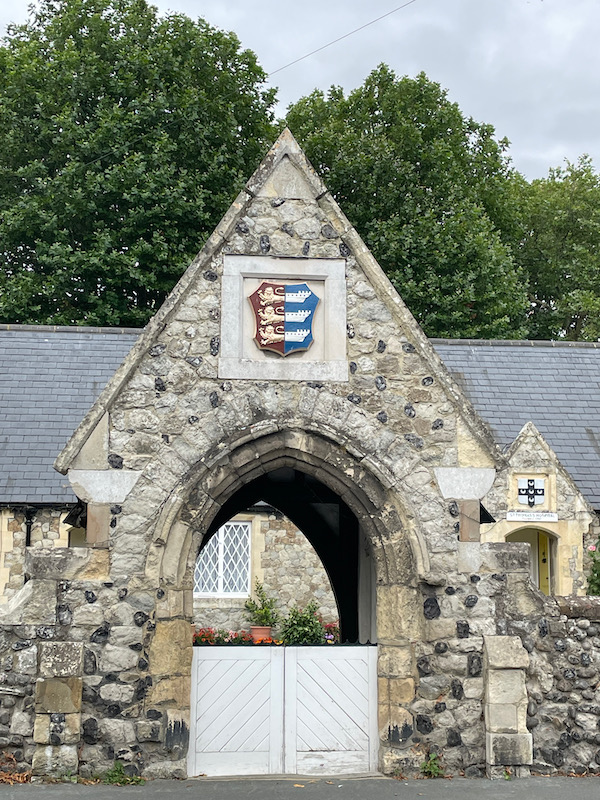
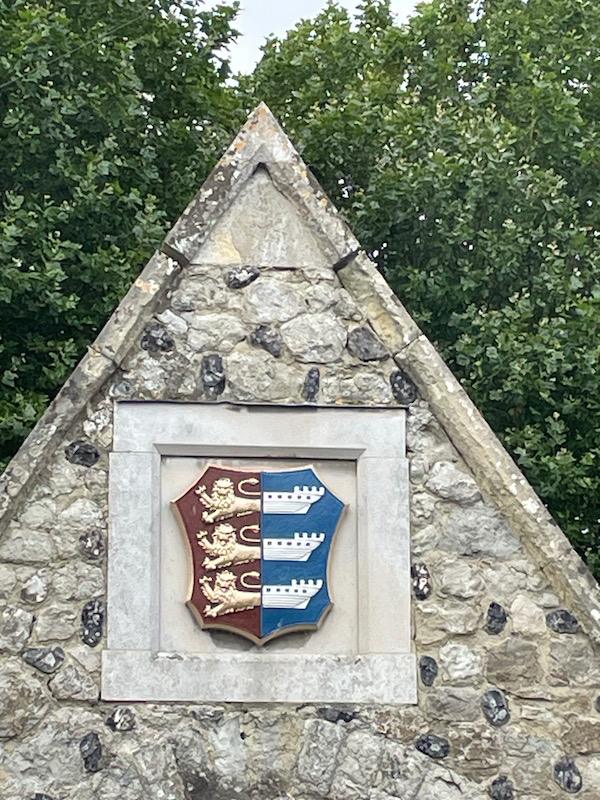
The parking lot across the street from The Red Cow was where the town's cattle market used to be and many of the regulars at the Red Cow were animal farmers. Cattle and sheep were reared on the marshy fields outside the town walls before being herded into the market. Farmers had to breed animals that could live on marshy land. Breeds of North Kent sheep in particular were well adapted to living on these salty soils. The farmers would quench their thirst with beer here, which was safer to drink than the polluted water that flowed along the Delf and other streams around the town.
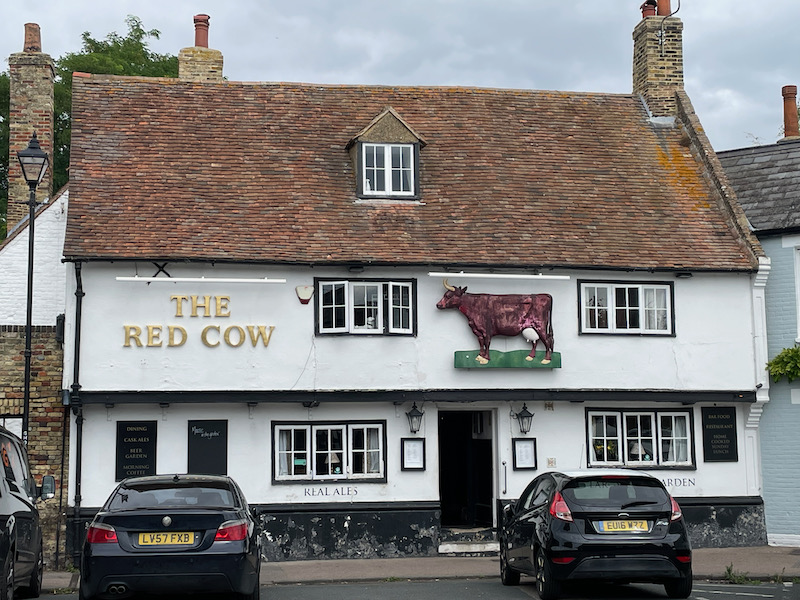
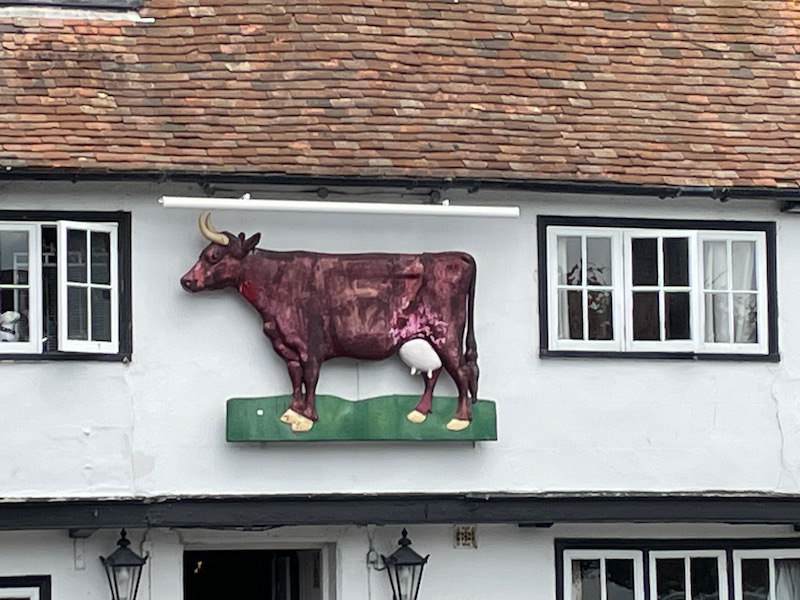
The history of Sandwich includes both people arriving (like the Dutch weavers) and people leaving. By the 1600s, Sandwich had declined as a major trading port but it was still used by smaller ships. This was a period of religious turmoil when English Puritans left to start new lives overseas. For example, around 40,000 Puritans left England and settled in America. There is a town named Sandwich, in Massachusetts that was founded by Puritan migrants. This house once belonged to writer and political activist, Thomas Paine. In 1759, he set up a tailor shop that specialized in making corsets. The business was not a success, so Paine left in pursuit of a better living, eventually settling in America. He became one of the Founding Fathers and authored wo of the most influential pamphlets at the start of the American Revolution, Common Sense (1776) and The American Crisis (1776–1783).
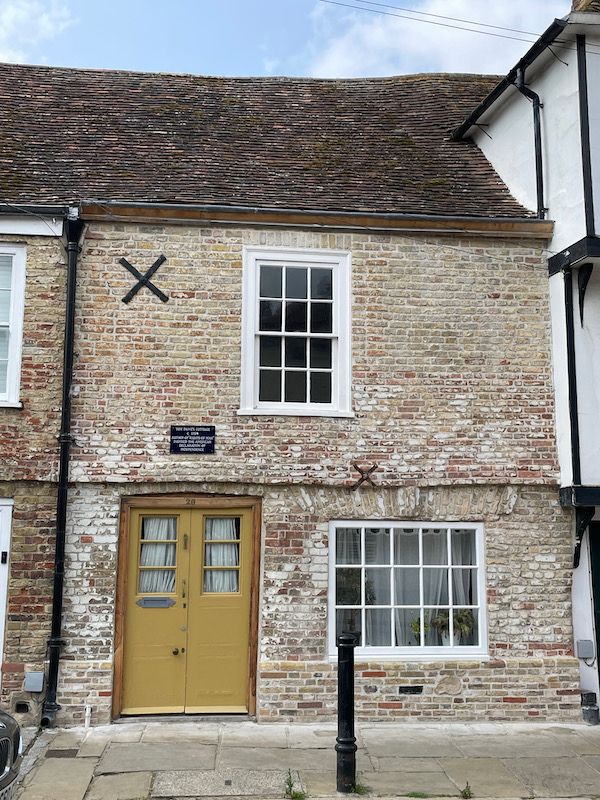
Another church that is no longer a church, St Peter's Church is one of 3 medieval churches in town. It offered protection during the Plague as it swept across Europe starting in 1348 and lasting for almost 300 years. The disease was spread by fleas, which lived on rats, which hid on ships and therefore, it spread rapidly in port towns. You can see how the top 2 stories of the tower are darker ... the original tower collapsed in 1661 and was rebuilt but in bricks, which are darker than the original stones. I took a few pictures inside of what was left that was somewhat "church-like" ... it now has a flea market inside.
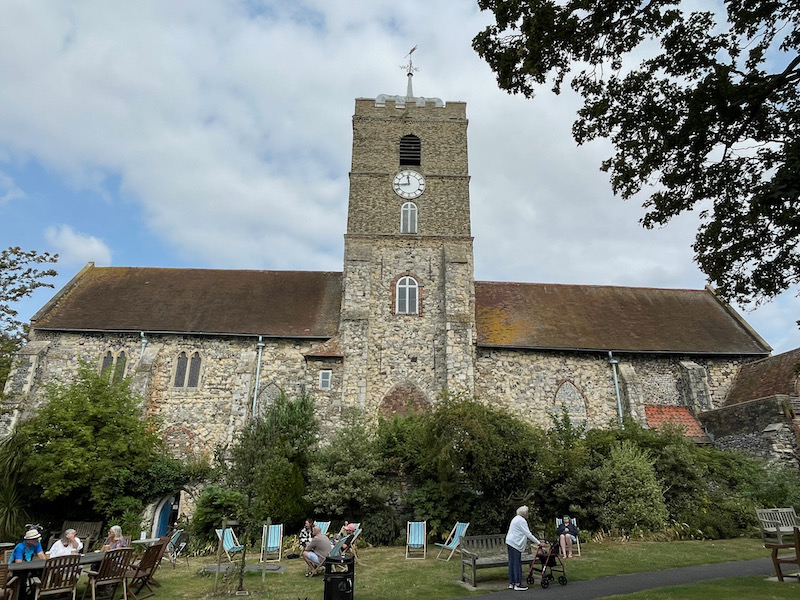
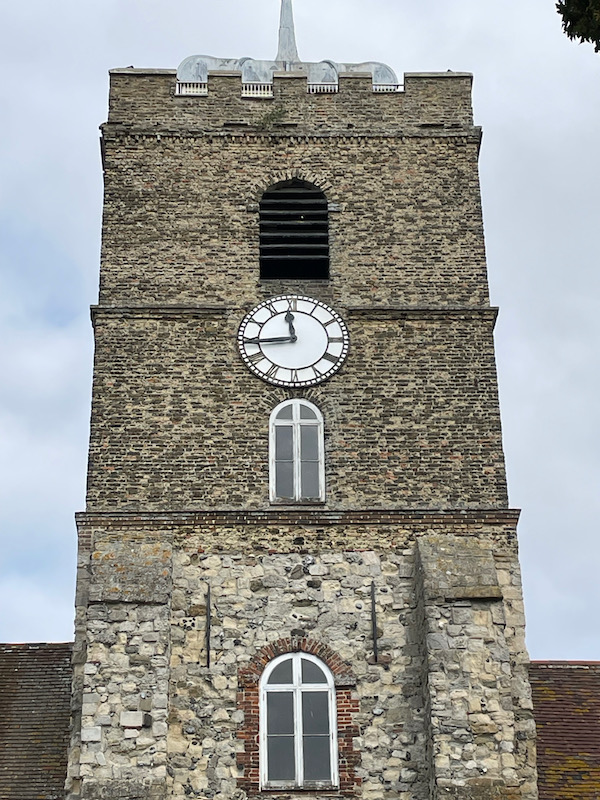
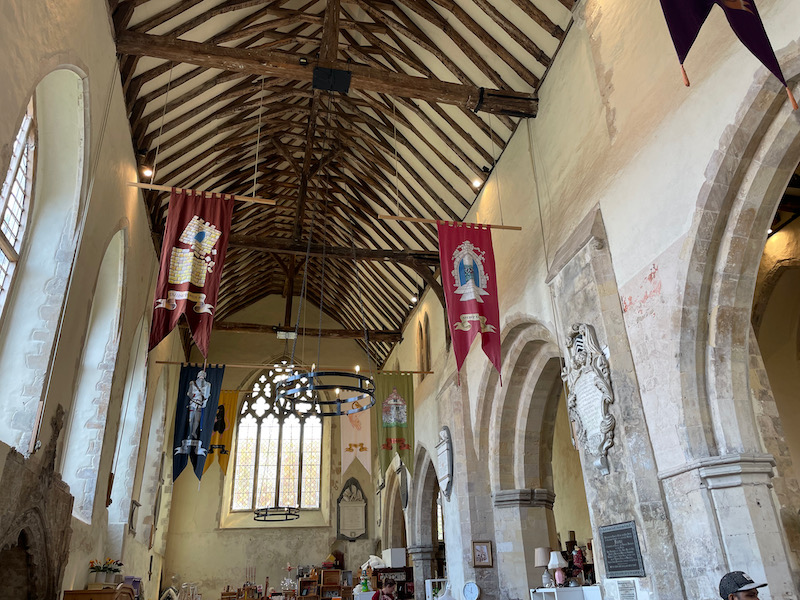
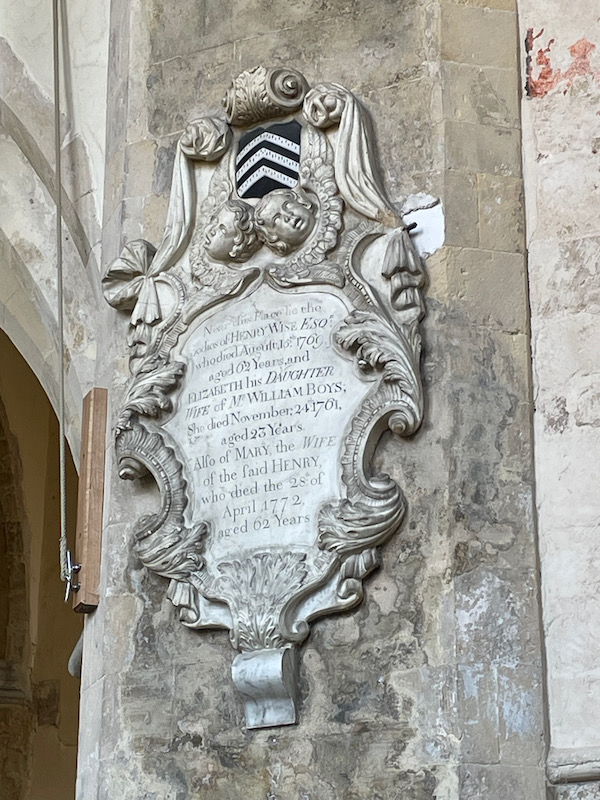
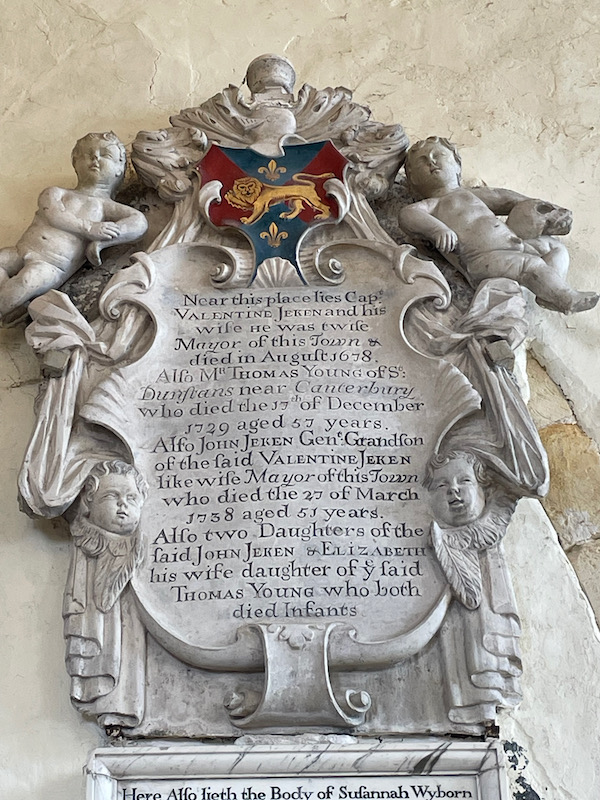
We headed to a pub for lunch, which had these cute little carved animals (maybe monkeys) holding up the upper floors that jut out over the ground floor. Inside, it was a very typical pub but they had a "Dog Menu"!
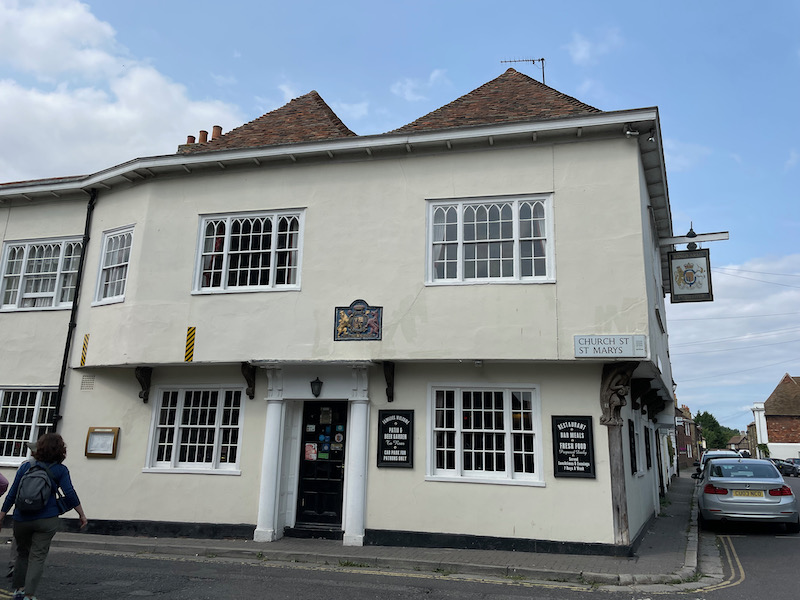

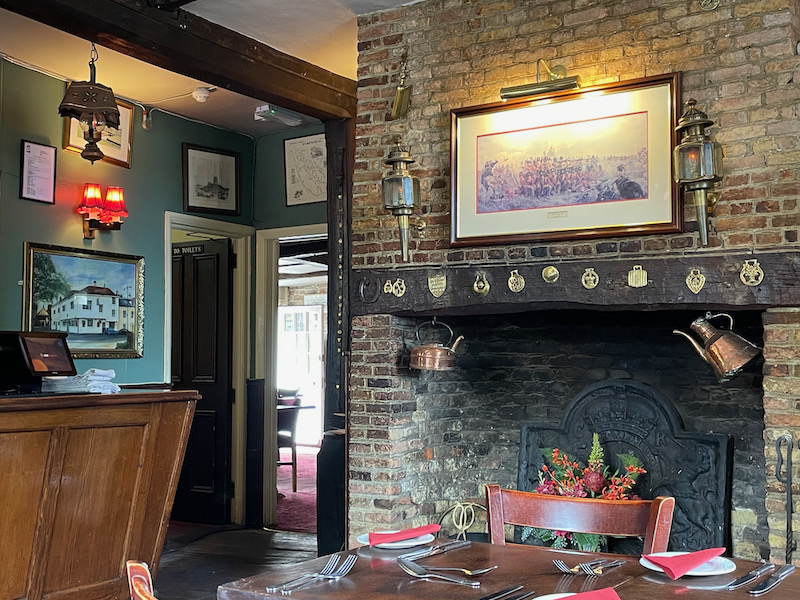
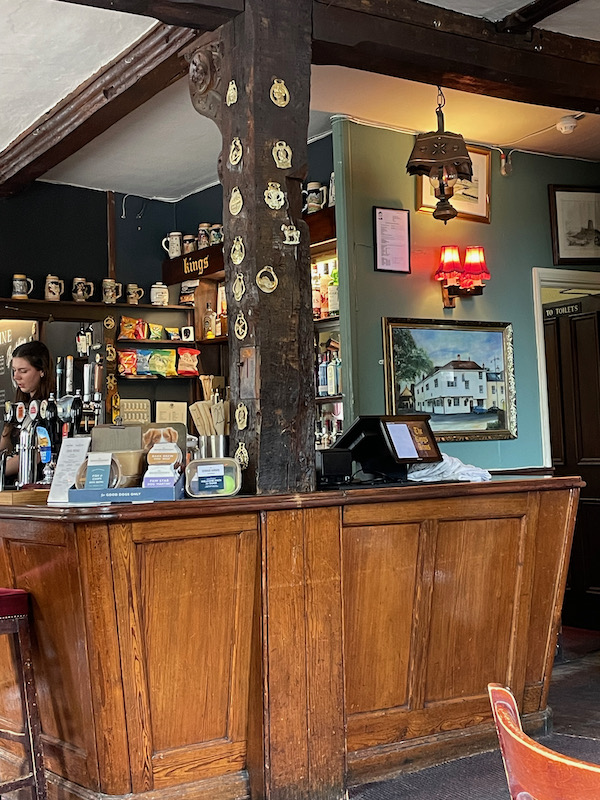
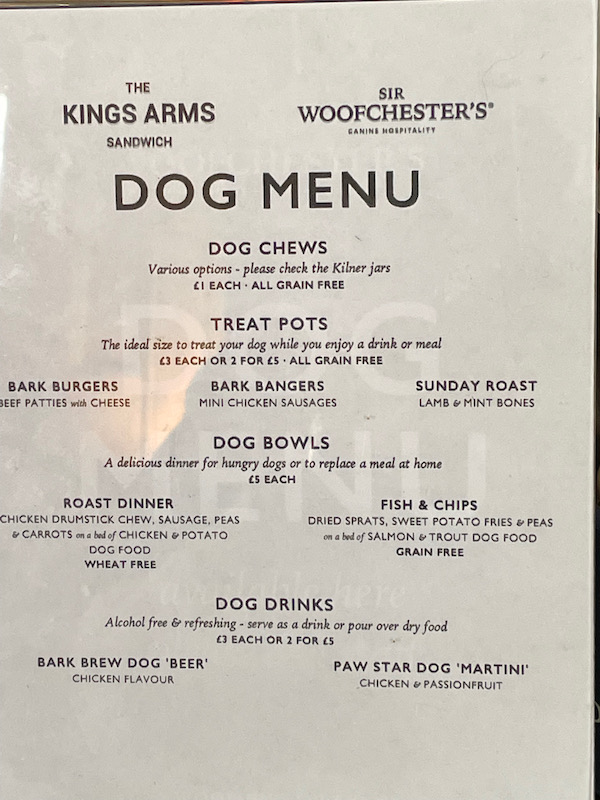
As we headed back to the car, we went by the Barbican or Davis Gate, which is the other medieval gate that is still remaining. It was built in the 14th century and from 1759 to 1977, it was used to collect tolls from people crossing the bridge. There is still a board on the inside wall listing the toll charges.
